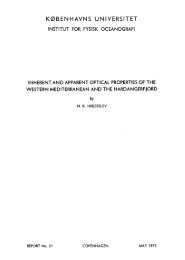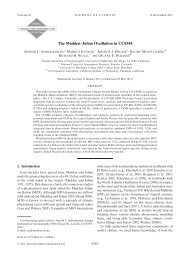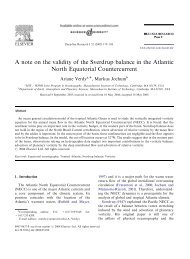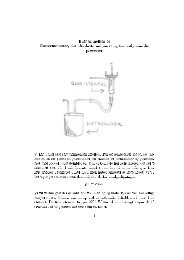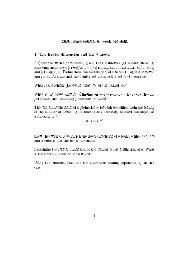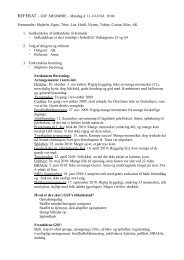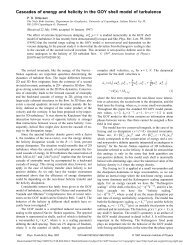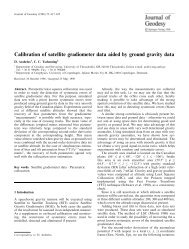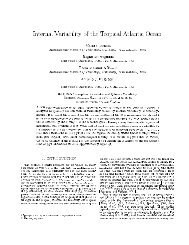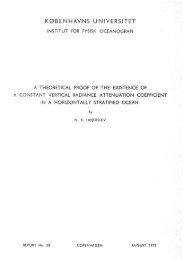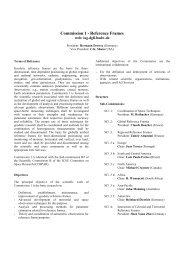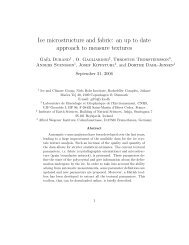Reduced point mass or multipole base functions. - Niels Bohr Institutet
Reduced point mass or multipole base functions. - Niels Bohr Institutet
Reduced point mass or multipole base functions. - Niels Bohr Institutet
Create successful ePaper yourself
Turn your PDF publications into a flip-book with our unique Google optimized e-Paper software.
As <strong>point</strong>ed out by Arabelos (1980) we can not simply put to zero the first N terms.Here a solution was found, i.e. that the first terms were not put to zero, but putequal to the so-called err<strong>or</strong>-degree variances, σ 2 e,i contingently scaled by a fact<strong>or</strong> αso as to reflect if the model was better (α≤1) <strong>or</strong> w<strong>or</strong>se (α≥1) in an area.To get a little m<strong>or</strong>e insight into this, let us interpret the <strong>point</strong> <strong>mass</strong> potential as areproducing kernel in a Hilbert space, where the <strong>functions</strong> are harmonic down to aBjerhammar-sphere with radius R B inside the Earth and r Q < R B . Using a Kelvintransf<strong>or</strong>mation we obtain a <strong>point</strong> D outside the sphereR B2r P r D= r Qr P(7)So that L=1 − 2 R B 2cos(ψ) + R B 2 2 2Rr P r D r P r . Then K(P,D)= B/L is the so-calledD r P r DKrarup kernel, Krarup (1969). When interpreted as a covariance function, it hasunitless degree-variances equal to 1, i.e. it is not well suited to represent theanomalous potential, since the degree-variances of T tends to zero like n -3 * q, q



